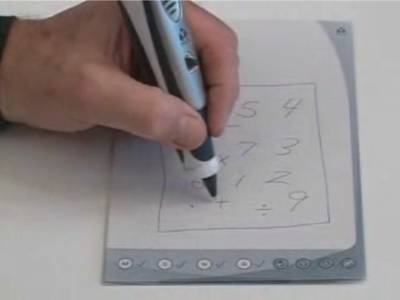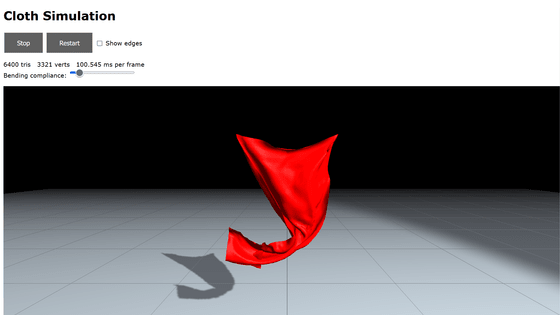The 'Flip Card Project' shows fluid simulations on an ultra-thin business card-sized display

FLIP (Fluid-Implicit-Particle) is a type of
GitHub - Nicholas-L-Johnson/flip-card
https://github.com/Nicholas-L-Johnson/flip-card
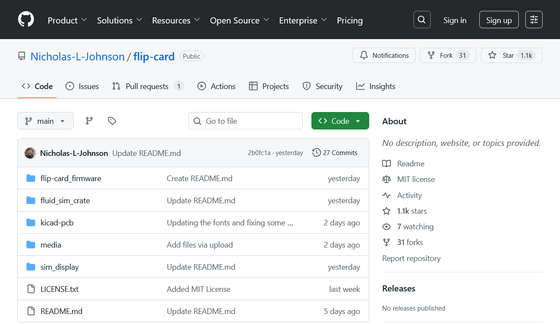
There are several typical methods for fluid simulation. The 'grid method' divides space into a grid and calculates the fluid velocity and pressure in each mass. This method is stable when it comes to large fluid movements, but has the disadvantage of being difficult to reproduce small vortices and splashes. On the other hand, the 'particle method' calculates movement by tracking particles, which is good at detailed calculations, but has difficulty maintaining surface and volume due to the properties of the particles. A hybrid method that compensates for the shortcomings of each method is the 'PIC (Particle-In-Cell) method,' and the 'FLIP method' is an improved version of the PIC method that combines the detailed particle-based movement with the stability of a grid-based method.
The FLIP method is a hybrid method that compensates for the disadvantages of the grid method and the particle method, but because it handles both grids and particles, it uses a lot of memory and requires a relatively large amount of calculation. Therefore, fluid simulation using the FLIP method requires a machine with high computing power, but Johnson's 'Flip Card Project' has achieved fluid simulation using the FLIP method on a small device the size of a business card.
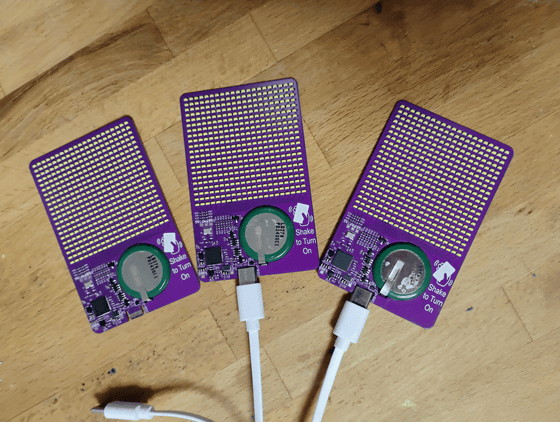
The size of the flip card when held in hand is as follows.
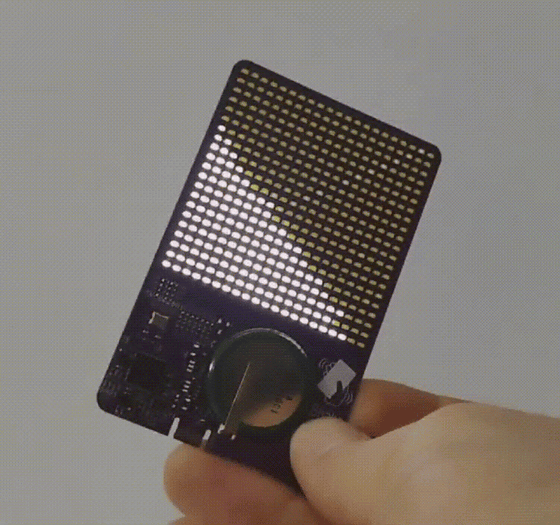
It is as thin as cardboard.
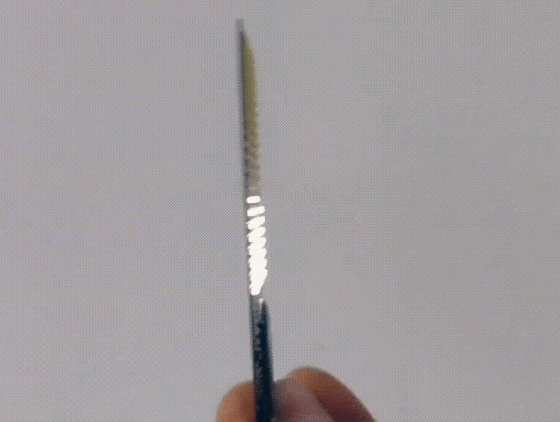
When you tilt the flip card, the particles flow down the grid.
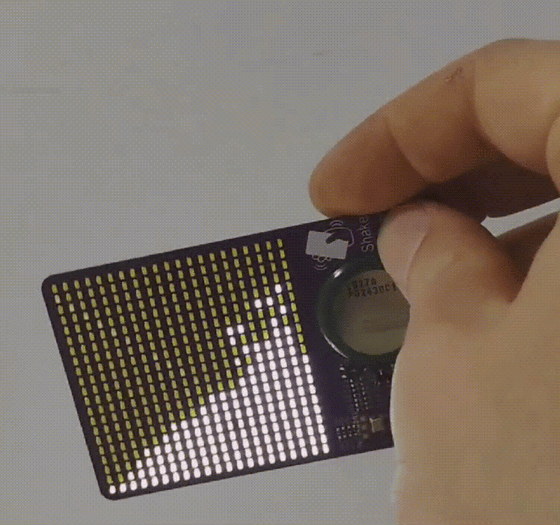
Johnson said the Flip Card project was inspired by Tim Jacobs' ' Fluid Simulation Pendant ,' which he released in 2024. The technical aspects of the Fluid Simulation Pendant are based on the video ' How to write a FLIP water / fluid simulation running in your browser ' from the YouTube channel ' Ten Minute Physics .'
Fluid Simulation Pendant - YouTube
The Flipcard project is open source, and Johnson has published details on GitHub.
Related Posts:
